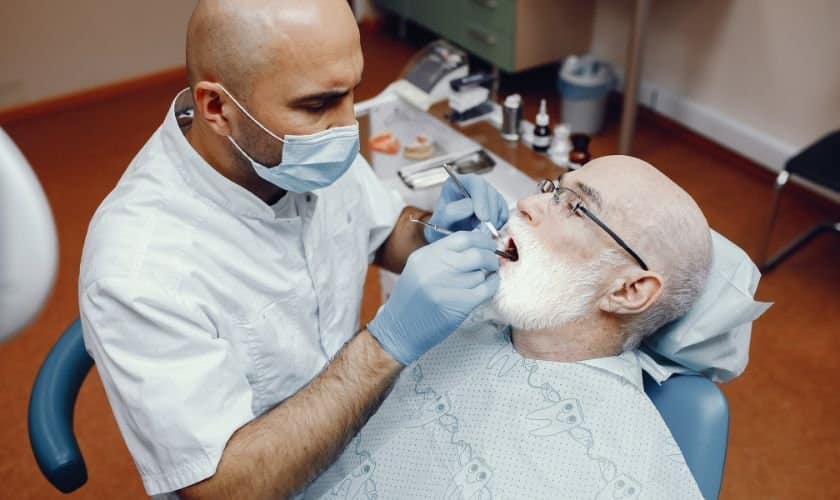
Are you scheduled for a composite filling procedure and feeling a bit anxious about what to expect? In this post, we’ll walk you through the process step-by-step so that you can be fully prepared. From the initial consultation to the follow-up care, we’ve got you covered. So sit back, relax, and learn everything there is to know about composite fillings – one of the most popular types of dental restorations today.
What is a Composite Filling?
A composite filling is a type of tooth-colored filling made from a mixture of plastic and glass particles. Composite fillings are used to restore small cavities or tooth fractures, and can also be used for cosmetic purposes to improve the appearance of your smile.
The composite filling procedure generally takes one to two hours to complete and can be done in one office visit. During the procedure, your dentist will first remove any decayed or damaged tooth material. The prepared tooth will then be cleaned and dried before the composite filling material is applied. Once the composite filling is in place, it will be hardened with a special light.
You may experience some sensitivity to hot or cold temperatures immediately after the procedure, but this should subside within a few days. It is also important to avoid chewing on hard foods or crunchy snacks for the first 24 hours after your procedure. Your dentist will provide you with specific instructions on how to care for your new composite filling.
The Different Types of Composite Fillings
Composite fillings are made from a mix of plastic and glass particles. They are tooth-colored, which makes them a popular choice for people who want their fillings to be less visible. There are three different types of composite fillings: direct, indirect, and semi-direct.
Direct composite fillings are placed in the cavity on your tooth and then shaped and polished. Indirect composite fillings are pre-made in a lab and then bonded to your tooth. Semi-direct composite fillings are placed in the cavity on your tooth and then shaped, but they are not polished.
The type of composite filling you get will depend on the size and location of the cavity, as well as your dentist’s preference. All three types of composite fillings are strong and durable, so you don’t have to worry about them breaking or coming loose.
The Procedure for Composite Fillings
Composite fillings are one of the most common types of dental restoration. They are used to repair damage to teeth caused by decay, wear, or trauma. The procedure for placing a composite filling is relatively simple and can be completed in a single visit to the dentist.
Before the procedure, your dentist will examine your tooth and take X-rays to determine the extent of the damage. The tooth will then be cleaned and a rubber dam will be placed around it to isolate it from the rest of your mouth.
Next, the tooth will be prepared for the filling. This involves removing any damaged or decayed tissue and shaping the tooth so that the filling will fit properly. Once the tooth is prepared, the composite material will be placed in layers and hardened with a special light. The final step is to trim and polish the filling so that it blends in with your natural tooth structure.
After the procedure, you may experience some sensitivity to hot or cold temperatures as well as some minor discomfort when biting down on hard foods. These symptoms should resolve within a few days as your tooth adjusts to its new filling.
After the Procedure
After the procedure, your dentist will give you specific instructions on how to take care of your teeth. It is important to follow these instructions carefully to ensure that your mouth heals properly and that your teeth remain healthy. In most cases, you will be able to eat and drink immediately after the procedure, but it is best to avoid hot or cold foods and drinks for the first 24 hours. You may also want to avoid chewing gum for a few days.
Maintenance and Care
When it comes to your oral health, proactive maintenance and care is always the best policy. That’s why it’s important to know what to expect before, during, and after a composite filling procedure.
Before the Procedure
Your dentist will give you a thorough examination and take X-rays of the tooth in question. If they determine that a composite filling is the best course of treatment, they will explain the procedure in detail and answer any questions you may have. You will also be given instructions on how to prepare for the procedure, which may include eating a light meal beforehand and avoiding drinking coffee or other caffeinated beverages.
During the Procedure
The first step of the procedure is numbing the area around the tooth with local anesthesia. Once you are sufficiently numb, your dentist will use a drill to remove any decay from the tooth. Next, they will clean out the cavity and prepare it for the filling material. The last step is placing the composite filling material in the cavity and shaping it to match the contours of your tooth. Once they are satisfied with the shape, they will harden the material using a special light.
Conclusion
All in all, the composite filling procedure is a straightforward dental treatment that can help restore your tooth’s strength and improve its aesthetics. It may seem daunting at first due to its unfamiliarity, but understanding what to expect before, during, and after the procedure will make the process much smoother. If you have any further questions or concerns regarding the composite filling procedure, be sure to consult with your dentist as soon as possible.
FAQs
- What is a composite filling?A composite filling is a tooth-colored resin material used to restore decayed teeth. They are also used to repair cracked or fractured teeth and to improve the appearance of discolored teeth.
- What should I expect during the procedure?The dentist will first remove any decay from the tooth using a drill. Next, they will clean and prepare the tooth surface for the filling material. The composite material is then placed into the cavity in layers and hardened with a special light. Once the filling is in place, your dentist will shape it and polish it so that it blends in with your natural tooth. The entire process usually takes about an hour or less.
- What should I expect after the procedure?You may experience some sensitivity to hot or cold temperatures immediately after your procedure, but this should go away within a few days. Be sure to avoid chewing on hard foods or candy until the numbness has worn off completely. Your dentist may also recommend that you avoid eating or drinking





